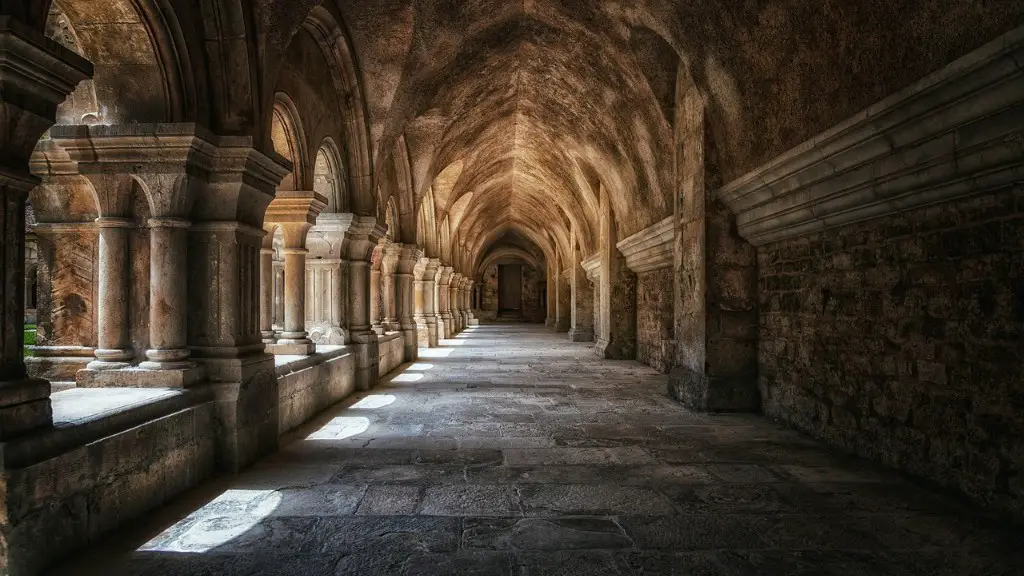Gothic architecture is a style that began in the 12th century in Europe. It is characterized by its ribbed vaults, flying buttresses, and pointed arches. Gothic architecture was used in a variety of buildings, including castles, palaces, cathedrals, and abbeys.
The first Gothic architecture was built in the 12th century.
Where did Gothic architecture begin?
The Basilica of Saint-Denis was one of the first Gothic style churches. Abbot Suger led the rebuilding of the church, which was a venerated site where Saint Denis was martyred and where almost every French monarch since the 7th century had been buried. The Gothic style of the Basilica of Saint-Denis was influential in the development of Gothic architecture.
The Gothic style of architecture and art is characterized by its high buildings, intricate aesthetics, cavernous spaces, and expansive walls. It originated in the Middle Ages and was prevalent in Europe between the mid-12th century and the 16th century.
Who invented Gothic architecture
The Gothic style of architecture is characterized by its pointed arches and ribbed vaults, which were first used in the Basilica of Saint-Denis. Abbot Suger, who was the mastermind behind the construction of the Gothic cathedral, is credited with originating the style in the 12th century CE. Gothic architecture became increasingly popular in the following centuries, spreading throughout Europe. Gothic cathedrals are some of the most iconic and well-known buildings in the world, and the style has had a lasting impact on architecture.
Gothic designs were popular in the Middle Ages because they allowed for more sunlight to enter churches and other buildings. This led to the design and construction of some of the most iconic Gothic buildings, such as Notre Dame Cathedral and Westminster Abbey. Gothic architecture is known for its ornate designs, high ceilings, and large windows.
What is the Gothic period timeline?
The Gothic period of art is divided into Early Gothic (1150-1250), High Gothic (1250-1375), and International Gothic (1375-1450). Primarily a public form of Christian art, it flourished initially in the Ile de France and surrounding region in the period 1150-1250, and then spread throughout northern Europe.
The Gothic style of architecture was greatly influenced by the Romanesque architecture which came before it. The growing population and wealth of European cities also played a role in the development of the Gothic style, as people wanted to express their grandeur through architecture.
Why did the Gothic period start?
The Gothic style of architecture emerged from the Romanesque style in the 12th century and flourished until the 16th century. Gothic architecture is characterized by its pointed arches, ribbed vaults, and flying buttresses. Gothic buildings are often tall and slender, with intricate exterior decoration.
The abbey of Saint-Denis in Paris was one of the earliest examples of a building combining elements of the Romanesque and Gothic styles. The High Gothic years were dominated by France, especially with the development of the Rayonnant style. Chartres Cathedral is a classic example of this period of Gothic architecture.
What is the origin of the Gothic era
The term “Gothic” was used by Renaissance writers to describe the architecture of the Middle Ages, which they saw as being influenced by the “barbarian Gothic tribes” who had destroyed the Roman Empire. The Gothic style of architecture is characterized by its ornate and dramatic features, which contrast with the more rational and classical style of the Renaissance.
The Portuguese introduced the Gothic style of architecture to India during the 16th century. This style is characterized by its use of pointed arches, ribbed vaults, and flying buttresses. The Portuguese used this style to build many churches and cathedrals in India, including the Church of the Sacred Heart of Jesus in Goa and the Cathedral of St. Catherine in Old Goa.
What was Gothic architecture originally called?
Gothic architecture is a style of architecture that originated in France in the mid-12th century. Gothic architecture is characterized by its unique, ribbed vaults and flying buttresses, which allowed for the construction of taller and more structurally complex buildings. Gothic architecture spread to other parts of Europe, and by the 16th century, it had become the predominant architectural style in Europe.
The gothic style is a varied and disparate style of architecture, but what ties it together is its sacred purpose. The majority of gothic buildings that have survived were built to the glory of God. Gothic architecture was used extensively in the construction of cathedrals and other religious buildings, as well as in secular buildings such as castles and manor houses. Even today, the gothic style retains its air of mystery and grandeur, making it one of the most popular architectural styles in the world.
What is Gothic architecture history
The gothic style of architecture is a unique and recognizable style that originated in Europe’s Middle Ages. This style is characterized by its tall, vertical proportions, pointed arches, external buttressing, and asymmetry. The gothic style became popular in the 12th and 13th centuries and continued to be used throughout the medieval period. Gothic architecture is often associated with grand cathedrals and castles, as well as other large public and religious buildings.
The term “Gothic” eventually came to mean a style of fiction that includes elements of mystery, horror, and death. Many Gothic novels were set in dark, foreboding castles or mansions, and often featured ghostly apparitions or other supernatural elements.
The Castle of Otranto was followed by a number of other Gothic novels, including Ann Radcliffe’s The Mysteries of Udolpho (1794) and Matthew Lewis’s The Monk (1796). These novels were extremely popular in the eighteenth century, and continued to be popular throughout the nineteenth century.
When did the Gothic empire fall?
The last stand of the Ostrogothic king Teia at the Battle of Mons Lactarius in 553 marked the end of Ostrogothic resistance and the beginning of the assimilation of the remaining Goths into the Lombard tribe. The Lombards were another Germanic tribe who invaded Italy and founded the Kingdom of the Lombards in 567. The assimilation of the Goths into the Lombard tribe was a slow process, but it was helped along by the fact that the two groups shared a similar language and culture.
Gothic architecture is a style of architecture that began in the 12th century in Europe. It is characterized by long, pointed arches, exterior buttresses, and ribbed vaults. Gothic architecture is often associated with the spooky, dark, and haunted elements of medieval Europe.
Warp Up
Gothic architecture was first developed in the 12th century, in the regions of France, Germany, and Italy.
The first Gothic architecture appeared in the 12th century and continued until the 16th century.





